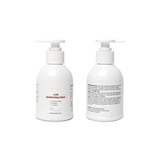This is especially true in industries such as foodservice and healthcare where pathogens can be spread easily from person to person. Therefore, it is important to create accountability around hand care. But are we focusing too much of the discussion on which pathogens are killed and in how many seconds? Without employee compliance, none of this matters.
Compliance monitoring systems of various sophistications are being used with increasing frequency around the world, yet hand hygiene compliance levels are nowhere near where they should be. With hand hygiene awareness at an all-time high, why is it that workers do not wash their hands enough, at the right time, or in the right way?
Organizations often focus on product efficacy and kill claims rather than employee compliance. While making effective hand care products available is important, if employees aren’t using the product properly, product selection doesn’t matter. Poor compliance can lead to increased risk for employees, building visitors and an organization’s brand. But why is compliance low in many industries? The answer is skin health. Skin health can greatly impact whether or not employees perform hand hygiene when and where required.
Three reasons why site managers, team leaders and infection preventionists should consider skin health when developing a hand hygiene program include:
- Cracked, dry, irritated and allergy-prone skin is a common reason workers choose not to perform hand hygiene. If a person fears that his or her health is at risk from handwashing or other hand care practices, then they will be less likely to perform proper hand hygiene.
- It is important to wear gloves and rehydrate skin regularly to protect skin health. However, lack of education and knowledge around correct procedure can lead to misuse and hand health issues, which may discourage hand care activity.
- Every person is unique, and every skin profile is different. So how can organizations expect uniform results? The answer is simple: use milder, certified products that have been tested in the environment in which employees work.
Hand hygiene compliance is ultimately about personal choices and employee behavior. However, even when knowledge exists, action does not always occur. Encouraging proper hand hygiene should be a high priority for any organization. This begins with a discussion about skin health and how frequent hand care can improve hand hygiene. Hand hygiene is not just about killing germs. It is about protecting workers, guests, patients, students and society as a whole. It also about protecting an organization’s brand – and its bottom line.








-205x205.jpg)
-205x205.jpg)














